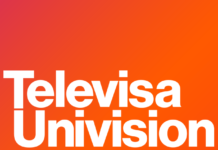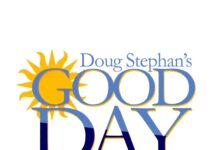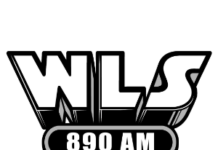
(By Bob McCurdy) This past week there was an interesting article on marketing website WARC titled, “Six CMO Tips On Building Brands In 2020,” that was based on a panel that included Eve Sleep’s CMO Cheryl Calverley and Birds Eye’s recently promoted UK General Manager Steve Challouma. They both reinforced the importance of “brand,” less emphasis on promotion and price discounting, along with the continued importance of reach.
Paying attention to those who are successful and who are on the front lines working for major advertisers is a good way for us to learn and guide our local advertisers.
Resist the siren call of performance (promotion/discount) marketing
In the FMCG (Fast Moving Consumer Goods) world, performance marketing is effectively all about price promotions, according to Birds Eye’s Challouma. “Your long-term aim as a marketer is to reduce your reliance on that — by strengthening the brand you sell more at full price.”
Comment: Too much focus on price has obliterated brand differentiation. Earlier this year a Havas Brand Survey found that consumers would not care if three-quarters of brands disappeared tomorrow. In the digital and “voice” future, consumers will rely more and more on strong brands to help navigate their available choices and their purchases. Those brands/businesses that overly rely on promotion and discounting will be those built not on a foundation of concrete, but sand.
Eve Sleep’s Calverley points out that Eve Sleep may be a DTC (Direct To Consumer) brand, but it will only grow by becoming more than a digital brand — that means more of a physical presence with partners, and with that comes more emphasis on brand building. “Extended search is not going to help us sell a mattress.”
Comment: “Search” can only sell so much product (true of any media option), which is why many DTC brands are altering their marketing tactics to include a well-rounded mix of media. Brands/businesses have to tell their story in a more wide-ranging fashion and should be doing it in as many different media channels (digital and otherwise) as possible. Different media help insert a brand into the consumer’s life and deepen the manner in which a commercial message is absorbed (aka encoding variability and multiple-source credibility).
Interestingly, both Unilever and Procter & Gamble are discovering that brands must be more than just digital brands, as both are struggling to turn their DTC acquisitions into profitable businesses. The trend in the DTC space is that online-only brands are increasingly looking to brick-and-mortar stores and traditional media to grow their business.
Address the media maze
“The primary motivation is to maintain reach,” says Challouma. Maintaining the sort of penetration his FMCG brands command is not about targeting and programmatic.
Comment: Big sales require big reach. Niche brands/businesses not so much. Brands/businesses have to be “considered” to be “bought,” and to be “considered” the brand/business needs first to be “known.“ This requires reach.
Calverley says, “Next year, my challenge is going to be how do I continue to build reach in a really efficient way.
Comment: Building reach efficiently is what AM/FM does the best, according to Nielsen Total Audience data.
Brand remains essential
Challouma: “Without brand, how do you justify our peas being a 120% premium to Tesco’s peas?” Part of its growth model is built around having distinctive brands, which not only command that price premium but also instill a sense of pride among employees.
Comment: Without a strong brand, it is a race to the bottom with the ultimate destination being considerably less profitable. Think of all products/businesses that consumers can purchase as occupying a “room” in their heads. Some are well furnished and some are bare. A strong brand message and identity “furnishes” the room beyond bare-bones price.
Understand what to measure
When it comes to assessing the long-term impact of brand building efforts, Challouma references volumes sold on deal: “How many people you’ve persuaded to pay full price for your product versus having to discount it.” Over the past four years, Birds Eye business shifted from selling 60% on price promotion to 43%, “and the impact of that, in terms of profitability, is incredible. It transforms and that releases more fuel to be able to invest in long term.”
Comment: The percentages referenced above are in line with Field/Binet’s 60/40 rule. Sixty percent allocated toward brand and forty percent allocated toward promotion/activation.
It’s easy for marketers to get confused between marketing metrics, business metrics, and communication metrics, Calverley observes. “Strength of brand is not an abstract marketing indulgence; it equals profitability.”
Comment: Which brand can charge more? BMW or Kia? Coke or Shasta? Do the names Apple, Nike, Google, Rolex, Mercedes, carry any brand equity? A product/business that “stands” for nothing via a strong brand profile “falls” for anything — often off the shelves.
The availability of audience data and focus on the bottom of the funnel is leading to the feckless pursuit of the same strategies and tactics, with everyone chasing the same consumers, with similar messaging in the same channels. Everyone is looking at the same data, in the same way, and increasingly focusing budgets on extracting efficiency at the bottom of the funnel. The way to stand apart is simple, when the pack is going one way, go the other way and communicate why and how a product/business is different and brings value beyond the price card.
The advertisers featured on WARC are sophisticated, experienced, successful, and smart. Local advertisers would be wise to pay heed.





